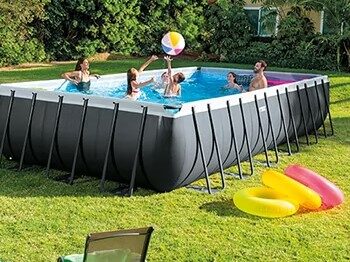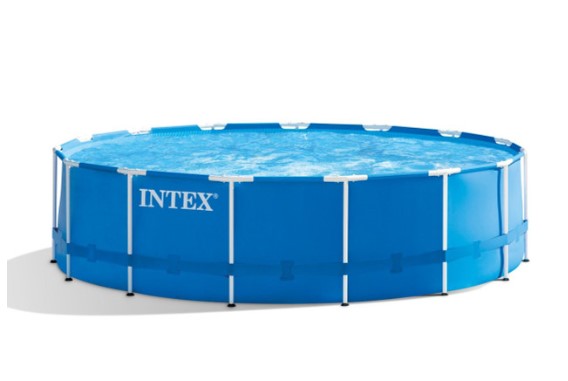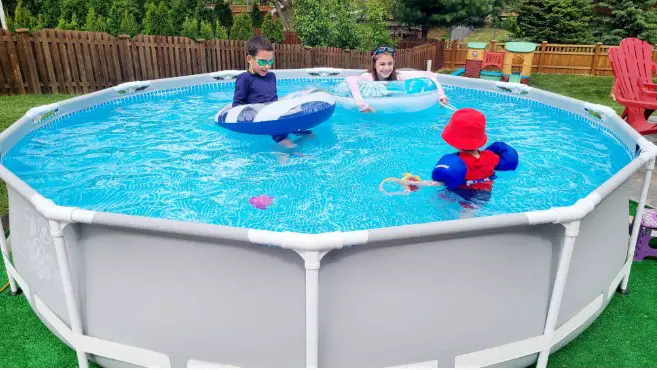Table of Contents
It is vital to the lifespan of your hot tub to maintain the correct water pH. This helps keep all of the elements in working condition and allows the heat to circulate evenly.
You can buy special hot tub chemicals to keep the pH in the region of 7.2 to 7.8. This is called the neutral range and is the desired range for the water to be in.
The chemicals will do this job easily, but they can be very harmful to your skin. They can also leak which is a safety hazard if you have young children or animals in your house.
You do not only have to worry about the pH of the water, but also its total alkalinity. The alkalinity reading is the water’s ability to resist changes in the pH level. The ideal alkalinity level in a hot tub should be 80 to 120 parts per million. This is very strongly linked to the pH of the water.
There is a much simpler, safer, and cheaper way to increase the alkalinity of your hot tub water using a household staple, baking soda. This raises total alkalinity a great deal but does not raise the pH too much.

How to read the pH of the hot tub
Look in the owner’s manual for the capacity of the hot tub. Turn off the water jets and test the water’s acidity with a pH testing strip.
The pH range is from 0 to 14. Readings of 0-7 are acidic, the lower the reading the more acidic. Water that is too acidic can corrode and wear down elements in your hot tub.
Readings of above 7.8 are very alkaline and this can also cause issues. Your skin is likely to become itchy and red. You may find calcium carbonate (also known as scale) forming in your water, a chalky white substance that can cause your water to turn cloudy.
This scale can build up in the pipes, causing them to become clogged and break. It can also block the water flow to the hot tub and can cause the heater to stop working.
Using baking soda to raise the alkalinity of the hot tub
Once you have worked out the volume of water your hot tub holds, add 1tbsp baking soda per 100 gallons of water. An average-sized hot tub holds around 600 gallons of water and therefore would require 6tbsp of baking soda.
Turn the jets of the hot tub back on and leave for 2-4 hours to allow the baking soda to circulate the whole tub. Turn the jets off and retest the pH and alkalinity levels.
Add more baking soda if the pH reading is still lower than 7.2. Continue this process of cycling the water and re-testing until the pH and the alkalinity fall in the neutral range.
Baking soda increases the pH a little but has a much larger impact on the alkalinity of the water. This is because baking soda has a pH of 8.3 and will not have a huge impact on the overall pH of the water. It will increase the reading a little but works well when the total alkalinity needs more adjustment than the pH of the water.
If you regularly drain and fill your hot tub, this will help keep the pH in the neutral range without having to add anything to the water.
Water with a pH that is too high or too low can cause harmful bacteria to grow and can cause you to be exposed to legionnaires disease or hot tub folliculitis.
What problems can low total alkalinity cause?
Low total alkalinity means that the water in the hot tub is more acidic. It can cause delamination, cracking, etching, and pitting of the walls and exposed surfaces of the hot tub.
The metal elements of the hot tub, such as the pipes, heaters, and seals can corrode and lead to staining of the finish.
If your total alkalinity is consistently low, it can cause something known as pH bounce – where the pH level quickly fluctuates. Low alkalinity can also mean that chlorine and other sanitizing chemicals are less effective so you will have to use more of them for the same effect.
How to use a pH and alkalinity test strip
Remove a test strip from the pack and pull a sample of water out of the hot tub.
Dip the test strip into the water sample and leave it in for at least 10 seconds before removing it.
Compare the colors on the test strip to the pH test pad color to ascertain the pH of the water.
Compare the colors on the test strip to the total alkalinity test pad colors to get the alkalinity reading. The entire test should take about 30 seconds to complete and read the results.
There are no harmful chemicals in the test strips and they are very safe to use.
It is important to adjust and balance the total alkalinity of the hot tub prior to adjusting the pH levels as these will have an impact on one another.
Frequently Asked Questions
How does rain affect the alkalinity of a hot tub?
Rain is an acidic substance, and therefore the opening of your hot tub should be covered properly when it is raining outdoors.
Rainwater does not only lower the pH and alkalinity, but it can also add contaminants such as dirt to the water. It is likely to also increase the calcium hardness, total dissolved solids, and other chemical levels if a substantial amount of rain enters the hot tub.
What are the safe ranges for the water?
There are 4 elements you need to measure in your hot tub water to be safe.
Alkalinity: 80 – 120 parts per million
pH: 7.2 – 7.8
Chlorine: 1.5 – 3.0 parts per million
Bromine: 3.0 – 5.0 parts per million




